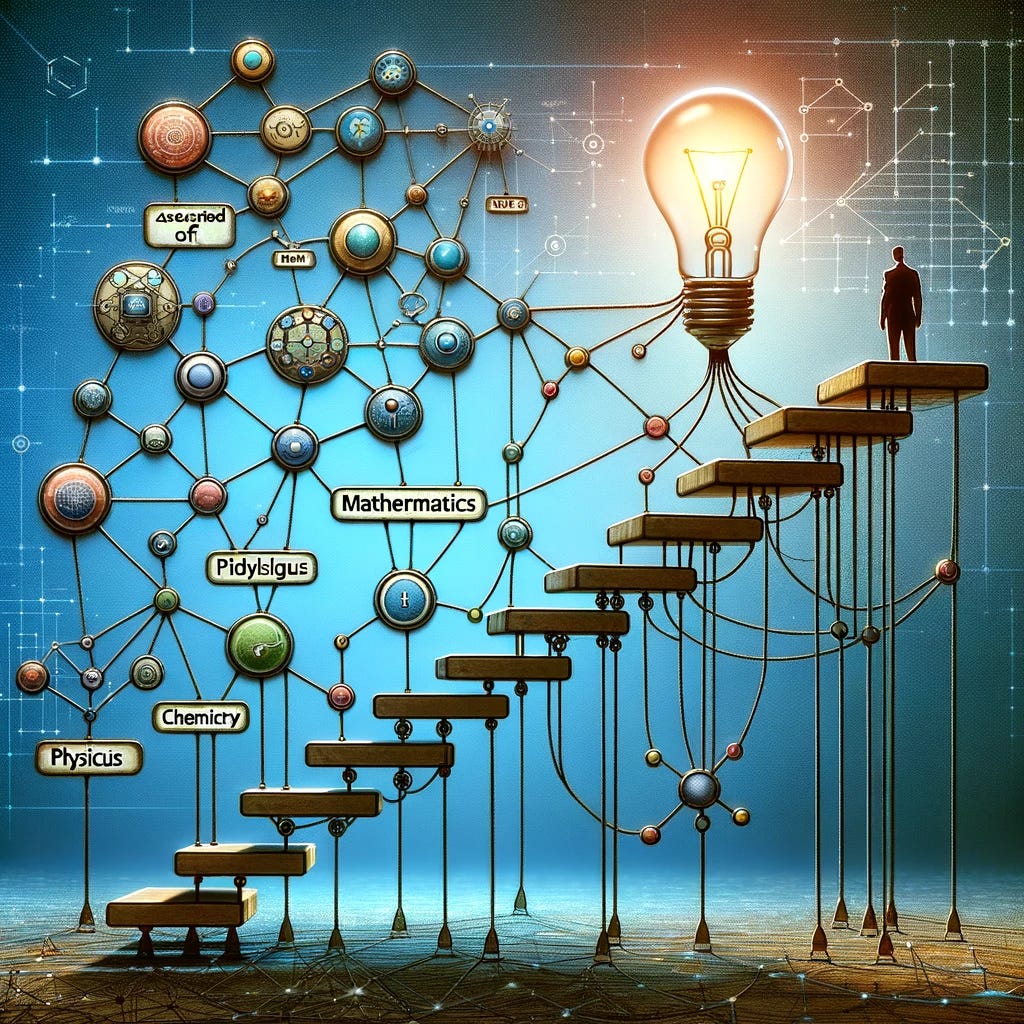This text discusses the limitations of large language models (LLMs) in terms of semantic understanding and logical reasoning. To address these limitations, the AI community has turned to retrieval augmented generative (RAG) frameworks, which leverage knowledge graphs to provide factual context. Knowledge graphs can be used to enable robust few-shot learning and augment chain-of-thought (CoT) prompting. The text also highlights the challenges and future directions in integrating knowledge graphs with LLMs.

Stepping Stones to Understanding: Knowledge Graphs as Scaffolds for Interpretable Chain-of-Thought Reasoning with LLMs
Large language models (LLMs) have revolutionized AI by generating coherent language from short prompts. However, they lack true intelligence, as they struggle with semantic understanding and logical reasoning. To address this, AI solutions have turned to retrieval augmented generative (RAG) frameworks, which combine language models with external knowledge sources.
Semantic similarity matching is commonly used to retrieve information, but it struggles with relevance and context. Knowledge graphs, which encode facts as interconnected nodes and edges, offer a solution. They enable associative reasoning, precise factual retrieval, and improved focus through graph traversal, search algorithms, and summarization.
Knowledge graphs can also enhance chain-of-thought (CoT) reasoning, which guides language models to reveal their reasoning step by step. By tracing CoT steps along knowledge graph pathways, logical reasoning grounded in factual context can be achieved.
Integrating CoT prompting with knowledge graphs requires coordinating different reasoning modules, such as sequences, retrieval, parsing, and scoring. This modular architecture combines the strengths of neural and symbolic approaches, compensating for their limitations.
The interplay between structured knowledge graphs and fluid vector inferences provides more reliable, versatile, and transparent reasoning. This synthesis promises new frontiers for situational intelligence.
However, there are challenges to overcome, such as constructing comprehensive knowledge graphs, integrating symbolic and vector spaces, personalizing and updating graphs, and handling evolving knowledge. Innovations in fusion techniques, grounding algorithms, customizable graph construction, and stream learning aim to overcome these limitations.
If you want to evolve your company with AI, follow these steps: identify automation opportunities, define KPIs, select an AI solution, and implement gradually. For AI KPI management advice and continuous insights, connect with us at hello@itinai.com or follow us on Telegram t.me/itinainews and Twitter @itinaicom.
Consider the AI Sales Bot from itinai.com/aisalesbot to automate customer engagement and manage interactions across all customer journey stages. Discover how AI can redefine your sales processes and customer engagement. Explore solutions at itinai.com.
List of Useful Links:
- AI Lab in Telegram @aiscrumbot – free consultation
- Stepping Stones to Understanding: Knowledge Graphs as Scaffolds for Interpretable Chain-of-Thought…
- Towards Data Science – Medium
- Twitter – @itinaicom




























